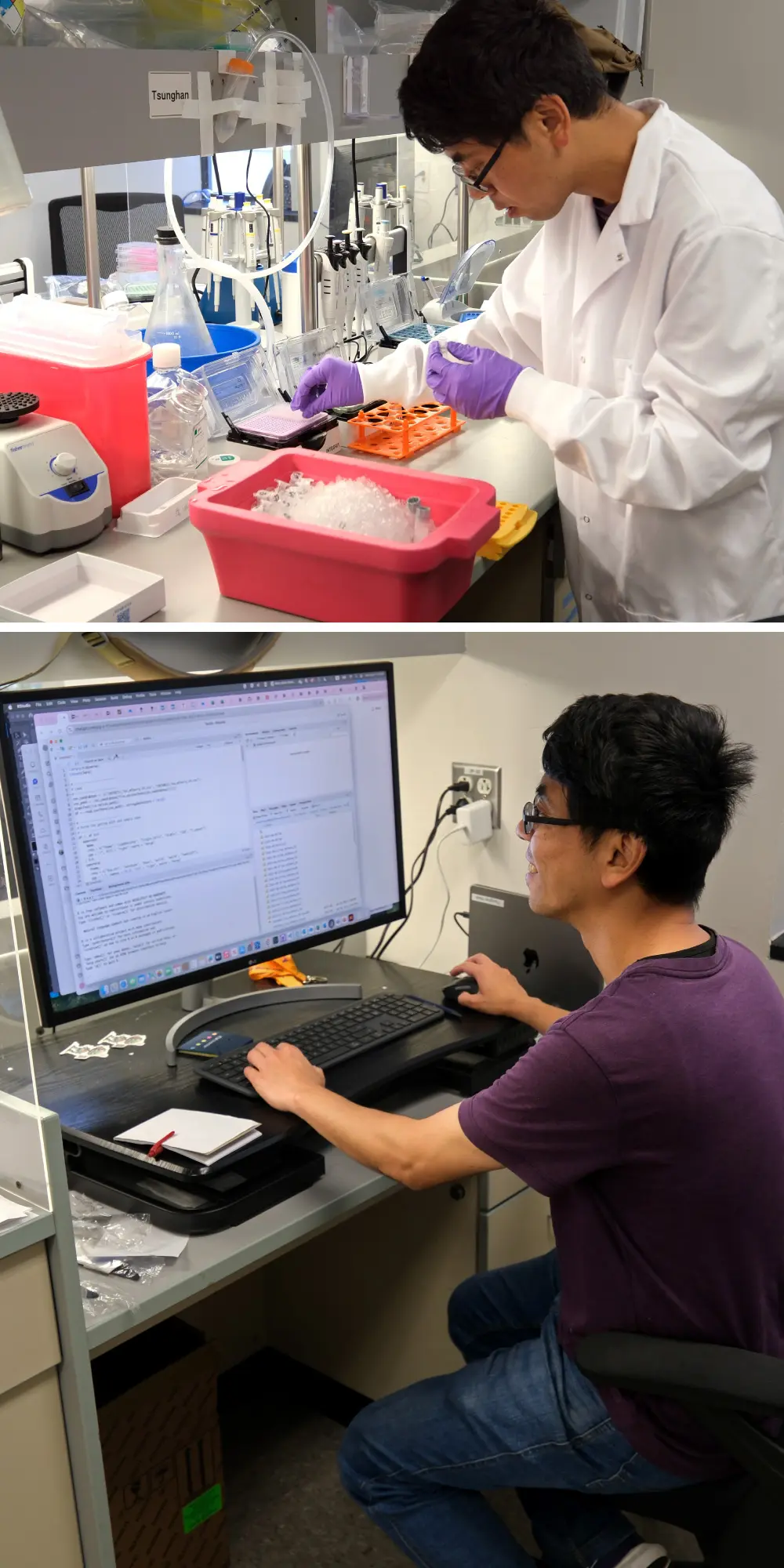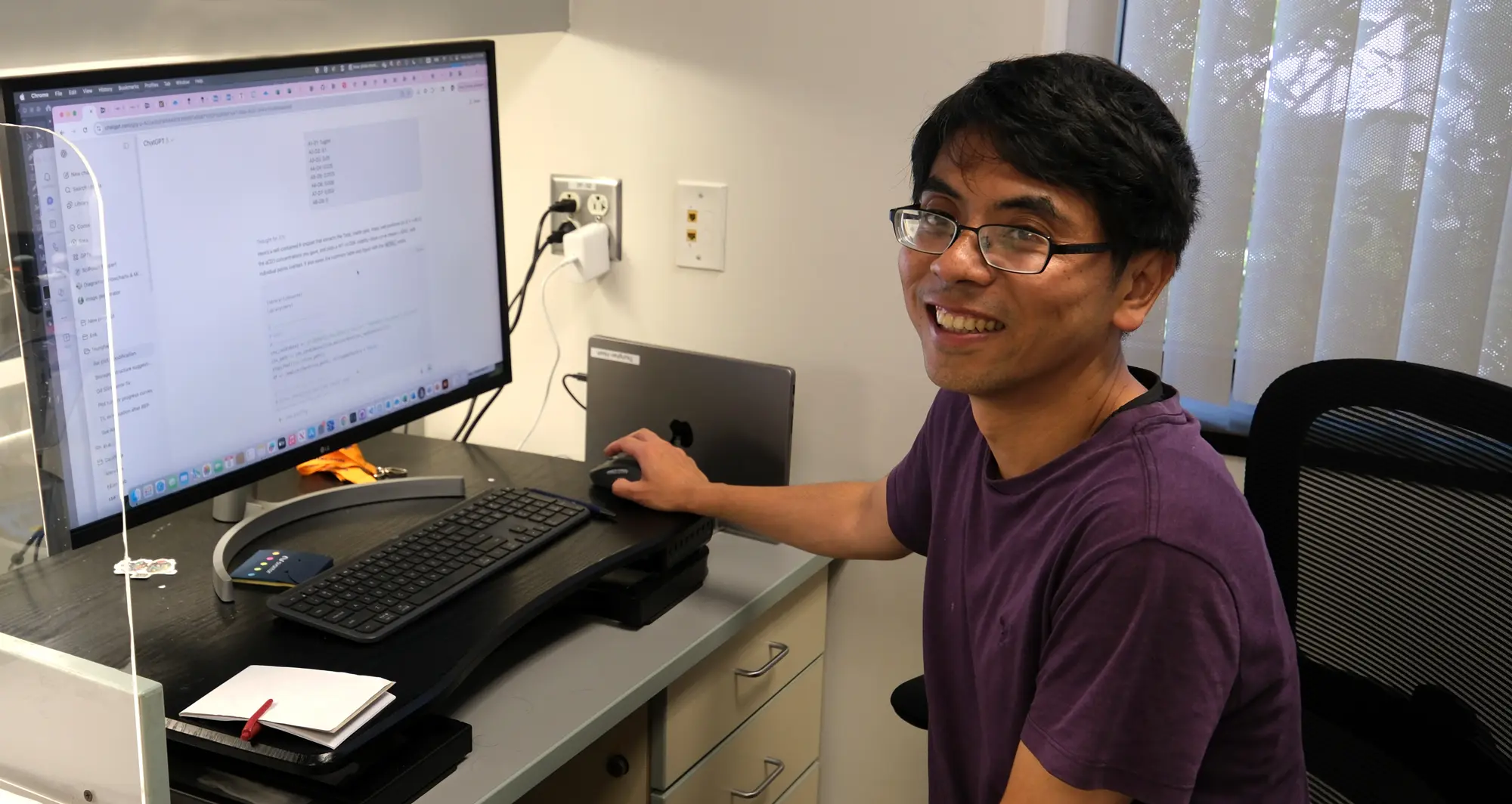Meet one of our early-career scientists at Sanford Burnham Prebys: Tsunghan Hsieh, PhD, a postdoctoral researcher in the lab of Xiao Tian, PhD. Hsieh studies stem cell biology and regenerative medicine to learn how to protect brain health during aging.
When and how did you become interested in science?
When I was in high school, I became interested in biology. I started to study biology more and more so that I could go to university and advance to fields such as molecular biology and immunology.
Then I totally changed my track to focus on immunology because I found it so fascinating.
How has your scientific career evolved?
After I completed my master’s degree in Taiwan, I wanted to see how people use biology in the business world. I went to industry for a few years, and there I was exposed to different companies and distinct products in a variety of fields.
I learned that I needed a PhD to get access to the most exciting technology in this field, so I started to apply for PhD programs around the world. Eventually I received funding from the Okinawa Institute of Science and Technology Graduate University and went to Japan to complete doctoral studies in immunology.
What brought you to the Tian lab at Sanford Burnham Prebys?
I was torn about staying in academia or going back to industry after earning my PhD. I decided that academia gave me the best chance to do something truly new and innovative.
After three years working in different roles in Japan and the Netherlands, I realized that I was most interested in the latest biotechnology. I needed to go to the country with the best biotechnology in the world.
Xiao and I connected on LinkedIn and began discussing his lab’s research on healthy aging. After one conversation, I decided to move to San Diego and join his lab.
What are the key areas of research you focus on?
My major project is to study how to reverse the aging process of neurons and other cells. During the aging process, neurons and other cells gain a very different phenotype.
We’re interested in a common mechanism behind this aging phenotype. As cells age, the chromosome structure and transcriptomic profiles become quite distinct from younger cells. If we can reverse this process, we may be able to help the brain stay healthier as people age, and less prone to conditions such as dementia that are more likely to afflict older individuals.
What motivates you about your research?
One thing that drives me is that I’ve found something that I truly like to do. Every day I walk into the lab with questions that I want to answer. If you have that kind of innate curiosity, science is a great outlet for it.

What do you like about working here?
I learned in my early scientific career that I was not as excited about fundamental research. Here at Sanford Burnham Prebys and in Xiao’s lab, I’m working on more translational science that fits my interests. I want to work on technology that benefits people and has the potential to be approved by regulators, commercialized and disseminated.
How would you describe the culture here?
Another one of the best things about working here is the people are friendly and open to collaboration. There are no hierarchies or traditions that get in the way of discussing potential collaborations.
What do you enjoy doing when you’re not in the lab?
Outside of work, I’m usually taking care of my kid, getting her everywhere she needs to go and trying to enjoy some time together as a family. And I am also enjoying the region’s delicious tacos and learning Spanish!
Postdocs at Sanford Burnham Prebys are pushing the boundaries of science every day through curiosity, collaboration, and innovation. This series highlights their unique journeys, what inspires their work, and the impact they’re making across our labs.
